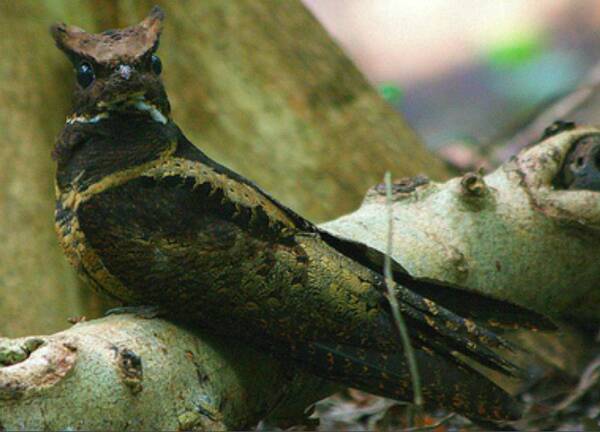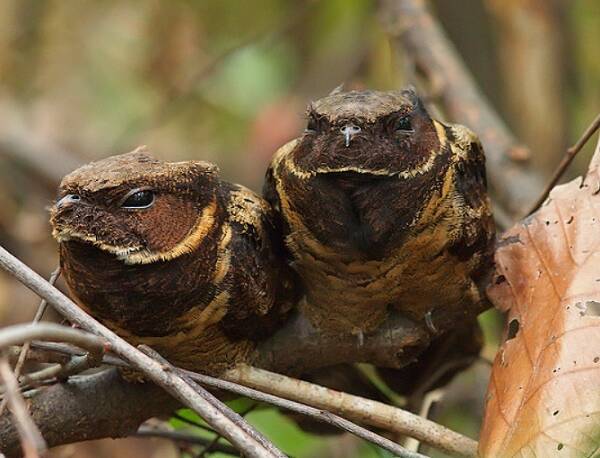Lyncornis macrotis
IUCN
LCBasic Information
Scientific classification
- name:Lyncornis macrotis
- Scientific Name:Eurostopodus macrotis,Great Eared Nightjar,Lyncornis macrotis
- Outline:Climbing birds
- Family:Nighthawks Nighthawks Nighthawk
Vital signs
- length:About 41 cm
- Weight:
- lifetime:
Feature
The Hairy-legged Nightjar is the largest species of Chinese nightjar and the only one with ear tufts.
Distribution and Habitat
In China, it is only found marginally in southern Yunnan. Abroad, it is found from Southeast Asia to India.
The hairy-legged nightjar mainly inhabits evergreen broad-leaved forests, secondary forests and forest edge shrubs in low mountains and foothill plains below 1,200 meters above sea level, especially in steep valleys with sparse trees.
Appearance
A nighthawk of very large size. Its body is covered with moth spots like other nighthawks. There is a white ring on the outer edge of its cheeks, which extends to the nape and gradually turns into leather yellow. The chest has a black chest band, which forms a sharp contrast with the pattern. The ear feathers are obvious. The iris is brown, the beak is horny, and the feet are dark brown.
Details
The hairy-legged nightjar is a medium-sized bird of the family Viperidae and the genus Viperidae. It often moves alone or in pairs. It is the largest species of nightjar in China and the only one with ear feather tufts. It is nocturnal and often crouches on the grass in the forest or lies on the dark tree trunks during the day. Because its body color is very similar to the color of the tree trunks, it is difficult to find it without paying attention. It is mainly active at dusk and night, especially at dusk, and it keeps circling in the air to hunt. It flies lightly and silently, and glides like a kite. It often hunts in flight, mainly feeding on insects, especially insects that are active at night.

The breeding season of the Hairy-legged Nightjar is from March to May. Usually it does not build a nest, but lays eggs on the bare ground in the forest. Each nest usually lays one egg. The color of the eggs is light creamy yellow to orange-red, with a few light yellow or light gray spots. The size of the eggs is 35-44 mm × 27-32 mm.

The Hairy-legged Nightjar has been included in the "List of Terrestrial Wildlife with Important Economic and Scientific Research Value under State Protection" issued by the State Forestry Administration of China on August 1, 2000.








